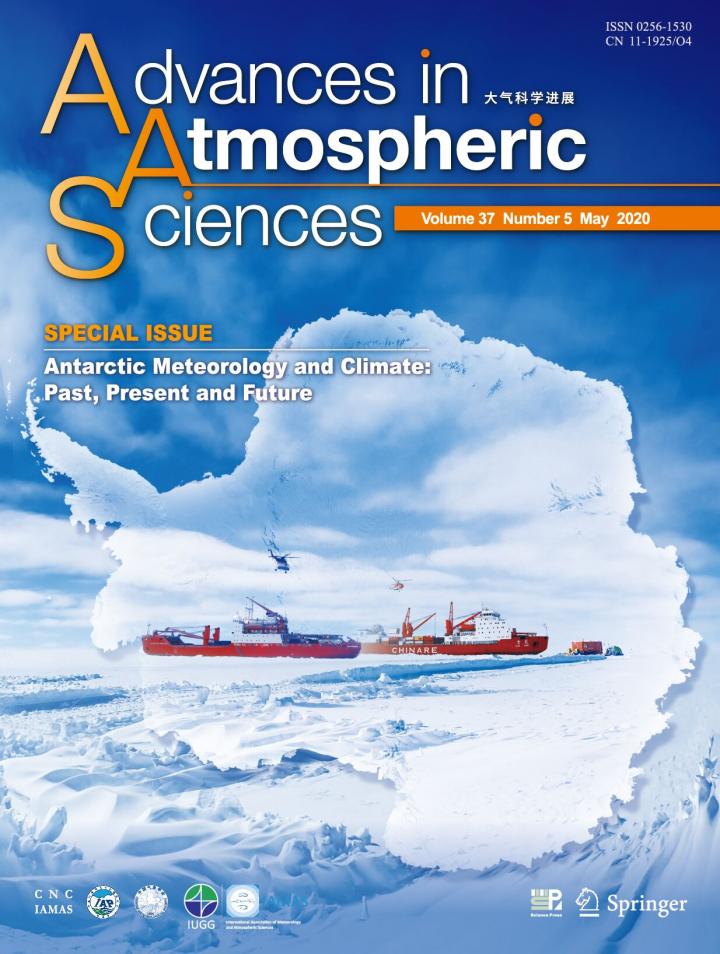AAS special issue: ‘Antarctic Meteorology and Climate: Past Present and Future’

Credit: Advances in Atmospheric Sciences
The April 18 special issue of Advances in Atmospheric Sciences, titled, “Antarctic Meteorology and Climate: Past, Present and Future,” presents the latest findings from expanded and ongoing research efforts in Antarctic meteorology, weather prediction, climate variability and climate change.
The issue presents research conducted during the recent Year of Polar Prediction (YOPP, https:/
YOPP efforts in the Southern Hemisphere stimulated additional research in Antarctic meteorology and climate by enabling increased data collection and enhanced computing power for modeling. The AAS special issue suggests that future Antarctic weather forecasts and climate predictions will be more reliable based on the combined new insights into the atmosphere, land surface, ocean conditions and sea ice variability–ultimately making operations in Antarctica and the Southern Ocean safer.
“These studies make important contributions to our understanding of the weather and climate systems in the polar regions and can improve future climate projections while producing important information for policymakers,” said Ming Xue, an AAS editor-in-chief, and professor and director of the Center for Analysis and Prediction of Storms at the University of Oklahoma in Norman, Oklahoma.
The special issue also indicates that long-term weather and climate changes are already underway across Antarctica and the Southern Ocean with potentially far-reaching consequences, which will be the object of future research.
“Climate change research in the Antarctic is relatively neglected compared to the Arctic,” said Jiping Liu, the issue’s lead editor and associate professor at the University at Albany in Albany, New York. “However, it’s clear that climate change is already impacting the Antarctic and that studying the changes is vital, because it enables us to predict the future climate more accurately.”
Signs of climate change in the Antarctic, added Liu, include a strong warming over the Antarctic Peninsula, a deepening of the Amundsen Sea low, rapid warming of the upper ocean north of the circumpolar current, an increase of sea ice since the late 1970s followed by a recent rapid decrease and accelerated ice loss from ice shelf/sheet during the same period.
Some of the highlights from the issue include:
Lazzara et al. summarize the challenges and outcomes of five themes discussed during the 13th (2018) and 14th (2019) workshops on Antarctic meteorology and climate, including meteorological observations, atmospheric numerical modeling, meteorological and climate research, weather forecasting and operational services, and the YOPP in the Southern Hemisphere effort (YOPP-SH).
Sato et al. assess forecasts with and without including radiosonde data obtained from the Japanese icebreaking research vessel and Antarctic Dome Fuji station.
Bozkurt et al. analyze recent near-surface temperature trends and identify a windward warming over the Peninsula (except during summer).
Ding et al. analyze precipitation at the Chinese station and identify a change in summer precipitation (rainfall vs. snowfall) that occurred around the early 2000s.
“This is the second special issue published by AAS highlighting scientific progress in important areas addressed by the YOPP,” said Thomas Jung, professor at the Alfred Wegener Institute in Bremerhaven, Germany, and YOPP coordinator. ” In 2018, AAS also published a special issue focusing on the impact of Arctic change on Eurasian climate and weather.”
###
AAS is co-published by Springer and Science Press. Special issue guest editors include David Bromwich, Dake Chen, Raul Cordero, Thomas Jung, Marilyn Raphael, John Turner and Qinghua Yang. The AAS editorial team appreciates efforts of the YOPP and International Association of Meteorology and Atmospheric Sciences in soliciting papers for the special issue.
Media Contact
Zheng Lin
[email protected]
Original Source
http://www.
Related Journal Article
http://dx.




